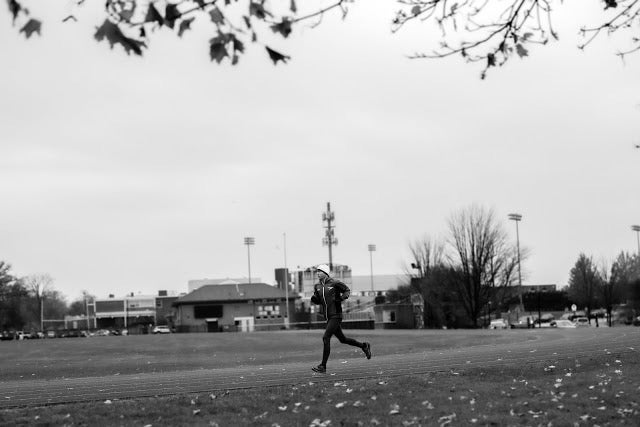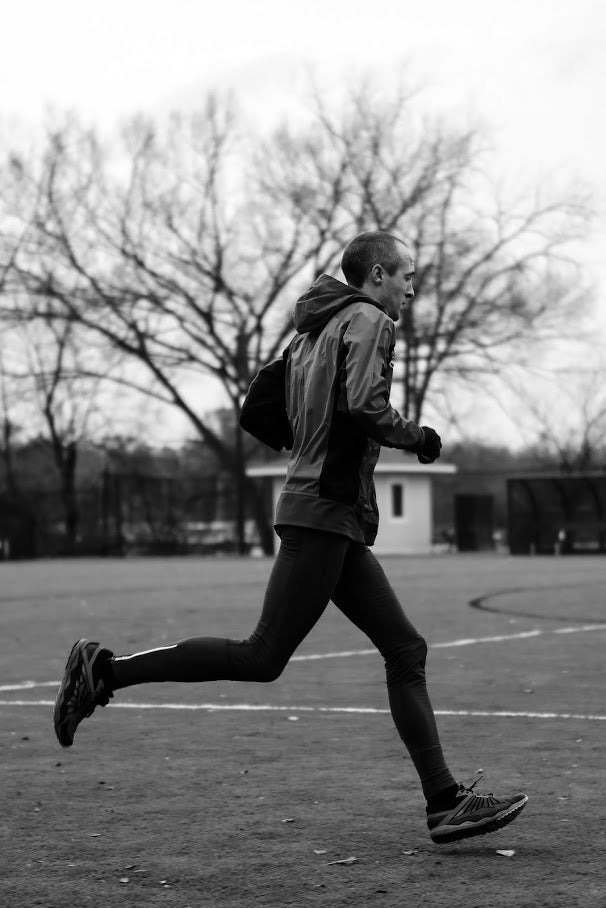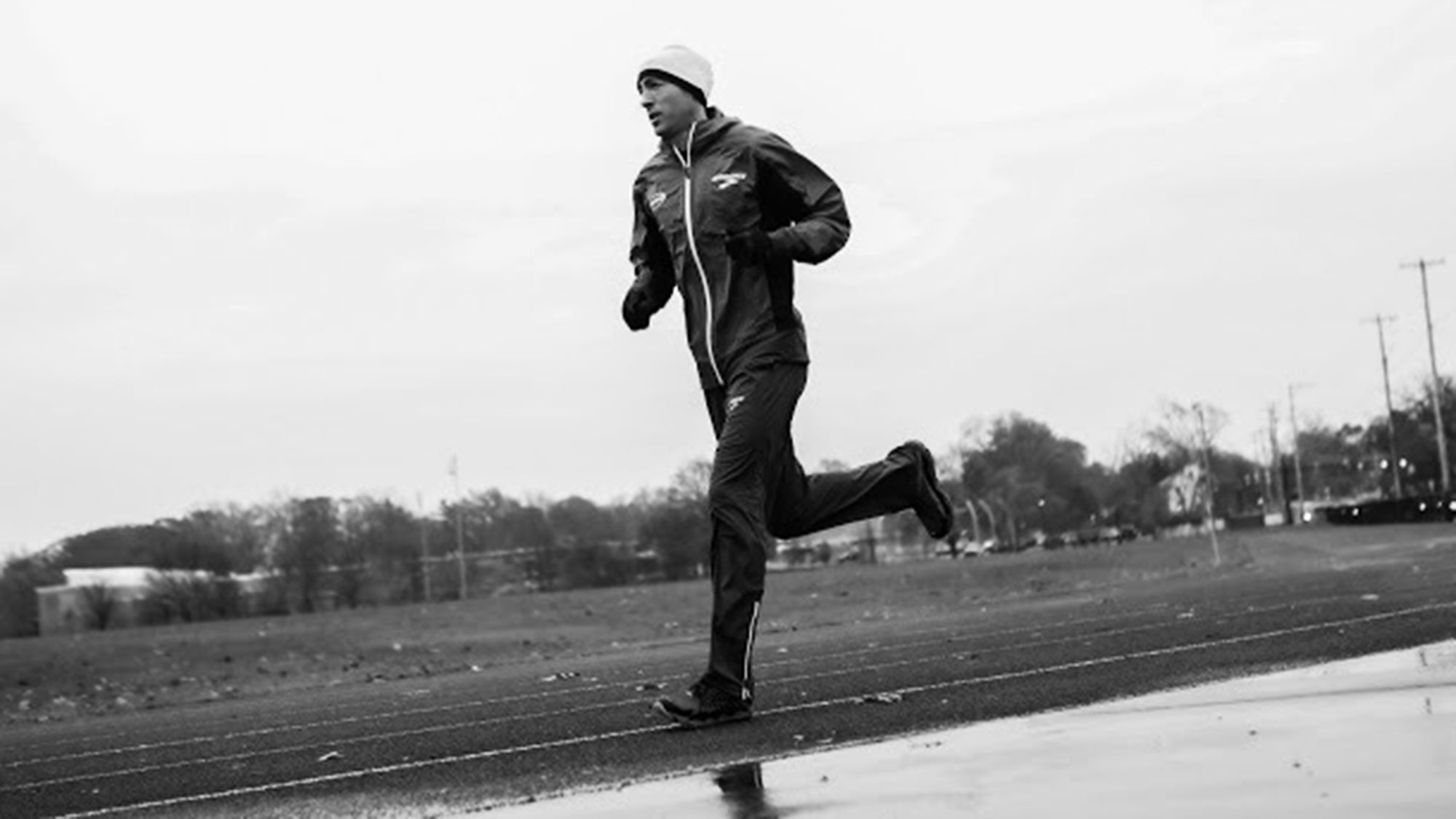Adapt or die. If you don’t change and adapt, based on your situation, surroundings or environment, you will struggle to survive, let alone succeed. That is the basic principle behind Charles Darwin’s evolutionary theory.
Many people have adapted that same principle to other facets of life—and running is really no different. In training and racing, over the span of many years you have to learn to evolve based on your past, limitations and strengths. Your body is in a constantly changing state and if you always train the same, your success will be limited.
The Blank Slate of Youth
When you’re a young runner or someone new in the sport, you are essentially a blank slate. Where you go from there depends on many factors but if you never adapt to the variables that arise, you’ll never get as far you wanted in your running.
As a younger runner, I had almost no deficiencies. I was light, strong willed, had an incredible natural aerobic system and— despite some critics—I even had decent speed! I saw nearly constant improvement and was able to train at a level that was truly remarkable and world class. With youth came the ability to train hard nearly everyday, something that blows my mind now.
The environment I was in at that age gave me a direct path to success. But it wasn’t a straight path; I realize now that over the next 20+ years, my situation was constantly changing. In the moment it never felt like that, but in hindsight it is much more obvious.
At 37, I train at a very similar volume level as I did when I was 17, but it looks completely different. There are some things I just can’t doing anymore and then other that I can do even better. The comparison is the hardest part to accept.

Comparing Favorably
Comparing where you are to where you have been is sometimes a good tactic. In the short term, it helps you see gains you have made in a training cycle or from year to year.
When I was younger around the age of 20, I knew that my weekly long runs of 17–20 miles would normally be around 6:00-6:15 pace average. It might change some based on the time a year and how fit I was, but I always knew thats where I would be roughly.
Now that I have all these years of hard training under my belt, my body has adapted to running closer to 5:45-6:00 for those runs to get the same benefit. They take the same amount out of me on that day because I have evolved my aerobic system over the years to be more efficient.
Unfortunately while my aerobic system has become better and I recover on that day the same aerobically, the structure of my body is not the same as it was when I was 20. My college coach Mark Wetmore use to say you can always improve your aerobic system, a principle he took as a disciple of the legendary New Zealand coach Arthur Lydiard. In many ways that’s true. Your body becomes more efficient at many things with aerobic training and those benefits can last even if you get out of shape.
Creeping Changes
But that fitness doesn’t mean you have the same flexible tissues or hormone levels to recover as when you were younger. Athletes can lose speed and power as they get older. So while I always use to run speed workouts two days after a long run, I had to learn to take three days at least before an intense interval session. I still needed that same volume but I just need more time before I could do my next quality session.
That need for extra recovery can be difficult to see, in response to changes that happen in the short and medium term—over the course of months and year to year. Looking back now across many years of training, I see it, but only too late.
Many injuries have happened over the years because I perpetually think of myself as in my early 20s. I think that’s a flaw that many people struggle with. “The mind is willing but the body is weak” so to speak. Identifying those weaknesses is important because you can still have success, you just may need to take a different route to get there.

Work What Still Works
Some weaknesses can’t be fixed easily. For example, I have an arthritic condition in my foot which makes speed work almost impossible now. I have always been a big believer that basic speed is important for all runners. I struggled for a while thinking I could just overcome that problem and muscle my way through my limitation which gradually got worse. Speed work is something I believe is essential even for marathoners so it was difficult for me to give that up. I felt that without regular speed work I was missing a huge component of training.
Ideally it would be great for me to be able to go to the track and run 200’s and 400’s but it simply isn’t possible anymore. I have had to adapt my thinking and approach to prioritize other aspects of training so I can still get the most out of myself. I spend more time focusing on quality in my long runs and tempos as I can still do those as good as ever. They were always my strengths anyway but I liked doing the training that I saw as a weakness. I know I can’t do the work to run sub 13:00 for 5k anymore, but I have instead adapted my goals and looked elsewhere to long distance races.
Reinvention
It is hard to give up on certain things but once you adapt your focus it frees you top to chase different goals. A great example I will always remember is Bernard Lagat. About three years ago I was running a cool down with him after a 10k road race in Manchester UK. I had won the race, but I barely beat him—and he was 42 at the time, moving up in distance.
Once the World Champion at the 1500m and 5,000m, I was amazed he was still running and having success at a longer distance race. I asked him how he was still doing it. He told me you can always change your goals.
He now, at an amazing 45 years old, has a legitimate chance to make a sixth Olympic team, this time in the marathon, an event he once told me he would never do. He knew he was no long a 12:53 5k runner but he had shifted his focus and reinvented what he could do.
Change is difficult no matter what, but it is absolutely essential to embrace it. As an athlete, you are an ever-changing body. Sometimes for the better and sometimes for the worse.
Make the most out of those variables that are constantly evolving and be flexible in your approach to training and racing. Success long term lies in being able to adapt to what you have to work with and to not be obsessed with what you can’t change.


